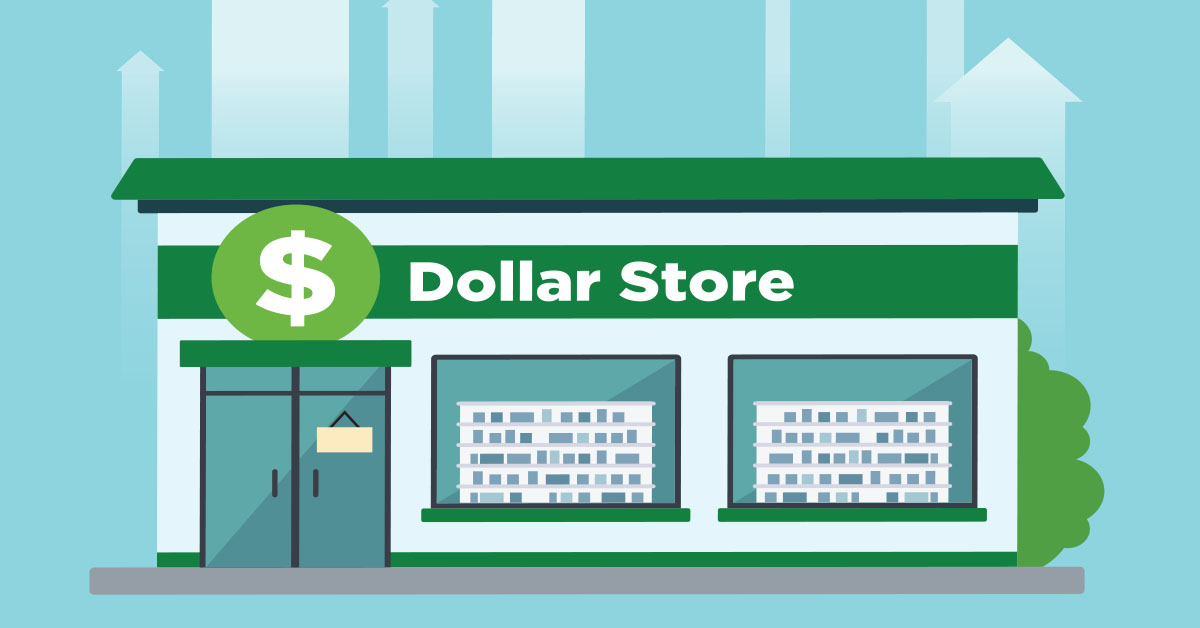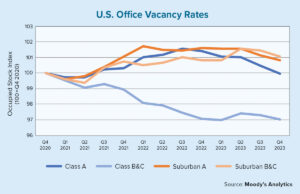In the risky world of retail development, there are preciously few sure things. But for more than a decade, one portion of this asset class that has performed well is the once overlooked strip mall. JPMorgan Chase, for instance, didn’t mince words in a commercial real estate report about the success of strip malls that was released in 2021 when COVID-19 shutdowns were common.
The banking giant maintained that “as we emerge from the pandemic, it’s a great time to explore these retail opportunities because of a combination of unexpected vacancies, short-term leases and 1031 exchange time limits.”
“They’re not the most interesting stores and they aren’t places you go to comparison shop or browse. But they are stores that fulfill a need.”
– Neil Saunders, retail analyst, GlobalData
These neighborhood retail centers are sometimes anchored by a grocery store, and they typically consist of one-story buildings that house retailers, consumer services and restaurants. They are usually located near a busy street and have generally weathered the pandemic-induced downturn better when compared to their upscale mall competitors. As for retailers, the dollar store has come to typify the rise and renewal of these local strip malls.
While the grocery store remains the elite anchor for neighborhood retail centers, discount outlets are gaining in prominence and importance. Sure, many of these stores no longer sell everything for $1, with some raising prices on certain items to $1.25 or more. But in this price-conscious age when seemingly everyone — no matter their income — is looking to save money, the dollar store is the place to be.
Led by Dollar General (which now has more than 19,000 stores in 47 states) and Dollar Tree (which boasts 16,000-plus stores and 200,000 employees in the U.S. and Canada), this retail sector has become ubiquitous across the country. And it’s still expanding: Dollar General expects to open more than 1,000 stores this year while Dollar Tree’s various divisions will add about 650 new locations.
Today, dollar stores can be found in big cities and small towns, and according to a 2021 Consumer Reports national survey, about 88% of Americans shop in a dollar store at least a few times per year. But it’s the dollar store expansion in rural America that has been truly eye-opening.
Research from Tufts University found that dollar stores are now the fastest-growing food retailers in the country and have doubled their share of food sales in rural areas. The Tufts report states that while dollar stores don’t tend to specialize in fresh foods and produce, they are filling a void for many communities, especially those in remote areas.
“I think the dollar store is, in a way, a magnet,” says Neil Saunders, a managing director and retail analyst for consulting firm GlobalData. “It pulls consumers in because a dollar store sells a lot of essential products, and it’s the type of store people will go to on a regular basis to purchase things like food and household goods.
“They’re not the most interesting stores and they aren’t places you go to comparison shop or browse. But they are stores that fulfill a need, so they can have a very positive impact by pulling shoppers into a center.”
These stores do have limitations. Saunders says that dollar stores are not the type of anchor that draw people in from far and wide, such as certain department stores or specialty grocers. But they do drive traffic.
“They’re a store that is popular with consumers, so they have a role to play in really creating vitality in strip malls and shopping centers,” he says. “But I think the key thing is that they are part of a wider ecosystem. I think it’s great to have a dollar store there, but probably you need other things around it to make a strip mall attractive.”
The dollar store movement has gotten so big that it’s even experiencing a backlash. In recent years, Dollar General and Dollar Tree have faced growing criticism that they offer low wages and ignore government fines concerning dangerous work environments. There is also talk that stores negatively impact communities and may be a factor in the creation of “food deserts,” or areas where residents must travel at least a mile to buy food.
Kansas City, Kansas; Tulsa, Oklahoma; Cleveland, New Orleans and Atlanta are among the jurisdictions that have either passed regulations or are considering laws to limit the expansion of dollar stores in some form. Many of these laws require that new dollar stores cannot be located within a mile of an existing store.
Despite this negative trend, Saunders doesn’t expect attempts to limit dollar stores to have much of an impact. While he acknowledges that the expansion of the sector can’t continue forever at its current pace, there are still plenty of communities that could use a dollar store.
“There are certain localities where these companies may find their expansion plans blocked. But quite honestly, they’ll just find alternative places where they can continue to grow,” Saunders says.
“I don’t think they would want these restrictions in place, but I don’t think it fazes them unduly. Dollar General and Dollar Tree still have thousands of locations where they can open new stores. So, it’s unhelpful, but it’s not really crimping their growth to any serious degree.” ●





